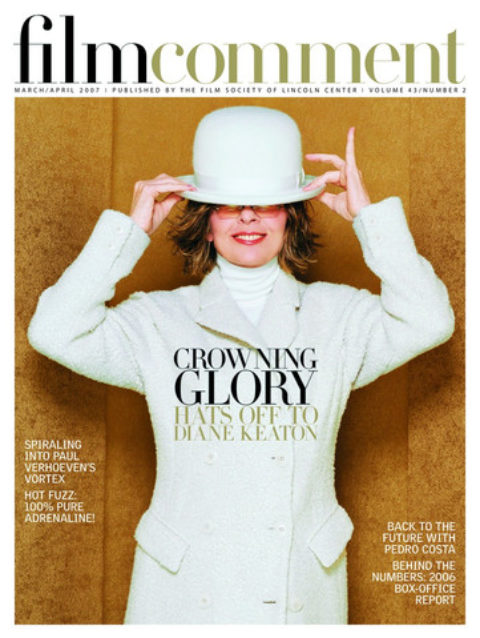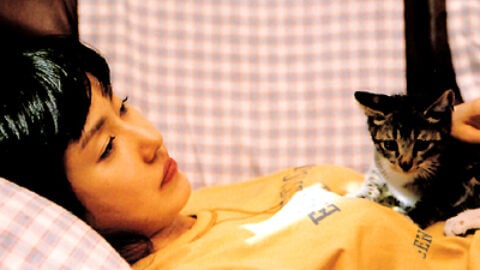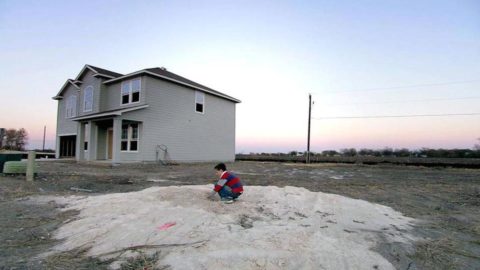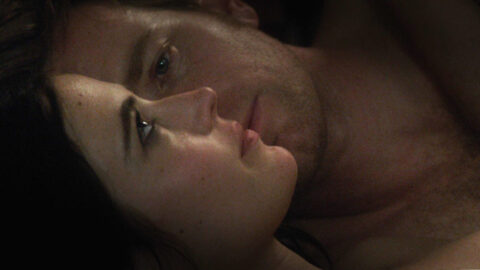A frat party with stars, a blogger convention, a bazaar that could easily share its exploitation wares with the AFM (American Film Market)—these were the most trying aspects of Sundance ’07.
Plus the omnipresent hype, not for the films themselves, but rather for that ineffable, high-altitude Sundance experience and for you, you, and you, oh my God, actually present at the most happening American film event, where, as one blogger gushed, the thrill was not in seeing the merchandise but in watching Harvey Weinstein make a deal. (Has that blogger taken a good hard look at the garbage The Weinstein Company has acquired of late?) If one could take a step back from the hysteria, negotiate the crowds, keep from beating up on oneself for choosing badly (with 125 features, there’s no way to see more than a third of them; I regret missing Tamara Jenkins’s The Savages, Chris Smith’s The Pool, Mike White’s Year of the Dog, and the documentary Grand Prize–winner, Jason Kohn’s Manda Bala), one might have managed to see a handful of very good films, most of them documentaries, but nothing that would have a lasting effect on either film history or the current discourse, nothing that suggested a remedy for the near-moribund state of American filmmaking, independent and otherwise.
This was the Sundance at which that longtime landmark, Steven Soderbergh’s sex, lies, and videotape, was replaced by last year’s $10-million acquisition, Little Miss Sunshine, as the film that confirms the festival’s status and functions as a Holy Grail for filmmakers and buyers alike. One of the many ways to chart Sundance’s development is through a comparison of the two films and how the festival dealt with their success.

Little Miss Sunshine
Made in the waning years of the Reagan/Bush Eighties, Soderbergh’s debut captured the guilt, barely repressed rage, and perverse desires of an alienated middle class. It also showed that despite the mess we were making of it, the world was still a delicately lovely place and that, by opening ourselves to its beauty, we might become aware of our own vulnerability and need for human connection. Besides its title—one of the most evocative in the history of American movies—the film was memorable for its merging of art-film reserve with populist seduction. It also was prophetic in its critique of media-armored narcissism—witness today’s parade of BlackBerry- and iPod-addicted Sundancers, automatically reaching for their hardware as they exited screenings, as they would have formerly for a ciggie. After winning the Audience Award at the United States Film Festival (it would not be renamed Sundance until the following year) and excited buzz from the dedicated cognoscenti of an independent-film movement that was as yet invisible to the mainstream entertainment world—the festival’s audience was fewer than 4,000—sex, lies, and videotape was acquired by Miramax (helping to put that then–purely indie company on the map) and went on to win the Palme d’Or at Cannes, thus confirming that it was indeed some kind of American art film.
Fast forward to Little Miss Sunshine, which played last year to a festival audience that now numbers 50,000, including “industry” denizens from studio-indie divisions, giant stand-alone indies such as Lionsgate, and a scattering of valiant unaffiliated independent companies, plus assorted lawyers, agents, producers, pr people, journalists and gossip-peddlers, fashionistas and bottom-feeders—every one of them attuned to the synergy among movies, TV, and the Web (it’s all entertainment) and how that synergy serves the bottom line. No wonder then that Little Miss Sunshine, a sitcom passing as a road movie, with its shrill pleas for our affection, banal family values, and lousy production values, won the Audience Award and was acquired by canny Fox Searchlight, which knew how to push it to an audience already primed by the similarly sitcom-styled but more charming My Big Fat Greek Wedding. Note to Fox Searchlight: why is it that as a member of the National Society of Film Critics, I received an awards-season screener and copy of the screenplay for Little Miss Sunshine and even an invitation to a Sunshine press luncheon, but nothing at all for Richard Linklater’s Fast Food Nation? (It was on my 10-best list anyway.) Did you forget that you had released it? When an indie stalwart and major talent like Linklater can be treated so indifferently by an indie division, what does that say about the current state of independent film and about Sundance, whose identity is synonymous with it?

Zidane: A 21st Century Portrait
When it was announced, midway through Sundance ’07, that the $60-million-plus-grossing Little Miss Sunshine had received Oscar nominations for best picture, original screenplay, and male and female supporting performances, its status as Sundance legend was irreversibly secured. Festival director Geoffrey Gilmore said that he found it “refreshing” that the Academy had recognized the talent of a film that had premiered at Sundance, a statement that was tastefully restrained compared to the blurb he had written for the film in the ’06 catalogue, which was hyperbolic even by Sundance standards and seemed—this is the kicker—nakedly sincere.
There is a class system at Sundance as at every large festival. A film’s status can be discerned by who writes the catalogue blurb and introduces a film at its premiere—whether Gilmore or a less powerful programmer—and when and where it screens. The much-commented-on lapse in judgment that relegated Kelly Reichardt’s Old Joy to the Frontier section last year affected its reception, not only because Frontier is a catch-all category for films that are regarded as too far-out for the majority of Sundancers, but more concretely, because Frontier films screen at the festival’s lesser venues. This year, Philippe Parreno and Douglas Gordon’s spectacular Zidane: A 21st Century Portrait, which would have mesmerized audiences had it played in the Eccles, the festival’s best theater, also was marginalized in the Frontier and shown in two inappropriately small theaters. Sundance claims that it’s not responsible for who attends or for whose purposes it has been co-opted, but when one watches Gilmore swanning down the aisle of the Eccles with Craig Brewer and Samuel L. Jackson, the director and star respectively of the laughably inept and naïvely-though-no-less-appallingly misogynist Black Snake Moan, one can’t help but conclude that Sundance is perfectly satisfied with having sold out.

Hounddog
In 1991, two years after the success of sex, lies, and videotape, Alberto Garcia, then the director of the competition section and the most creative, daring programmer Sundance has ever had, wrote an essay for the catalogue that in retrospect shows that the handwriting was already on the wall: “Last year, the industry, the press, and moviegoers alike flocked to Park City in search of the film which would ignite things in 1990 . . . Indeed it is this anticipation of discovery that makes the festival exciting, but it is also this fever-pitch mentality that breeds the hype that billows the hot air that melts the snow that ruins the skiing and makes Park City feel like Los Angeles on one of its chilly days: all this distracts from the spirit of celebration. While no ‘son of Soderbergh’ may emerge this year, there is a diverse group of extraordinary films to view, talk about, and be inspired by.” And indeed there were. In the competition lineup alone were Richard Linklater’s Slacker, Todd Haynes’s Poison, Julie Dash’s Daughters of the Dust, Yvonne Rainer’s Privilege, Hal Hartley’s Trust, Caveh Zahedi’s A Little Stiff, Jon Jost’s All the Vermeers in New York, Joseph H. Vasquez’s Hangin’ with the Homeboys, and that’s not all. I don’t love every one of those films, but together, they certainly seemed as if they were the foundation for a serious independent-film movement. That was then, this is Sundance now. To begin with the worst: ’07 was the year that the girl—raped, tortured, mutilated, murdered, half-naked and wrapped in chains or snakes—replaced the gun (as in a decade of Tarantino/ Rodriguez clones) as the icon of Sundance’s notion of the merger of exploitation and art. We had two Southern gothics with oddly parallel plots: the aforementioned Black Snake Moan and Hounddog. In the former, Christina Ricci plays a hormonally driven young woman who’s treated like a combination punching/douche bag by every guy in town except her true love (Justin Timberlake). He leaves to join the army, thus making way for her salvation by a kindly old blues singer (Jackson) who chains her to a radiator for her own good. If Brewer seems to be laboring under the delusion that he’s transforming Fifties drive-in exploitation material into a Lynchian art movie, Hounddog’s director Deborah Kempmeier imagines she’s made a feminist anti-abuse tract, and even brought a rape counselor to one of her screenings to prove it. In Hounddog (otherwise known as—let’s say it together now—“the Dakota Fanning rape movie”), the now-insufferable Fanning plays an 11-year-old Elvis wannabe whose gyrating hips give the local boys and her own father the wrong idea. Eventually she’s raped (anyone who tells you they’ve sat through the dull, clichéd 80 minutes that precede this dubious spectacle for any other reason than to see Fanning’s initiation into womanhood is a liar), but her dignity is restored by yet another kindly old blues singer (Afemo Omilami) who teaches her the meaning of soul. In addition to these fevered fantasies, there were two similarly trashy exercises in cinema sadism, both based on true stories. In Trade, a Texas border cop (Kevin Kline) buddies up with a Mexican teenager to find the latter’s 13-year-old sister, who has been kidnapped by Russian-mafia white-slave traffickers. The pioneering indie production company Killer Films, which has a penchant for true psycho-sexual crime stories, hit an all-time low with Tommy O’Haver’s An American Crime, which stars Catherine Keener as a mentally unstable mother of seven who enlists her own children and a bunch of the neighbors to slowly torture to death a teenage girl left in her care.

Snow Angels
Less sensational and more artful, but similarly pointless, was David Gordon Green’s emo melodrama, Snow Angels, in which a schizophrenic husband’s murder of his terrorized wife, signaled in the opening scene, is brutally enacted at the end. With this level of grimness among the fiction films (not inappropriate, given the state of the world, but by and large misdirected) it’s not surprising that the sleeper success story of the festival was John Carney’s Once, which stars Glen Hansard, the ebullient lead singer of the Irish band the Frames, as a Dublin busker who unexpectedly becomes romantically involved with a Czech immigrant (lovely Marketa Irglova) when they cut a demo together. Once has good music, lots of heart, and a twisty enough plot to make you long for the sequel, but it is so badly shot it’s almost unwatchable. (The only possible explanation for that rocking image is that the cameraman was tapping his foot to the music.)
Dark Matter, an elegant debut feature by the distinguished opera director Chen Shi-zheng was the strongest of the fiction films I saw. It too was based on a horrific true story, this one about a Chinese science Ph.D. candidate who ran amok on the University of Iowa campus. Rising Chinese cinema star Liu Ye is moving and convincing as the young physicist whose mind is on fire and who becomes undone when a jealous thesis advisor destroys his project and potential career. Let’s just say that, at Sundance, the narrative of mediocre authority figures ostracizing brilliant loners who don’t know how to play the game had resonance beyond the world of advanced physics. Similarly themed, Dror Shaul’s Sweet Mud, winner of the World Cinema Dramatic competition, is an acutely observed coming-of-age memory piece set in the mid-Seventies on a rigidly Stalinist Israeli kibbutz, where patriarchal privilege is unquestioned and the beauty of the landscape cannot compensate for the perversity of those in charge.








